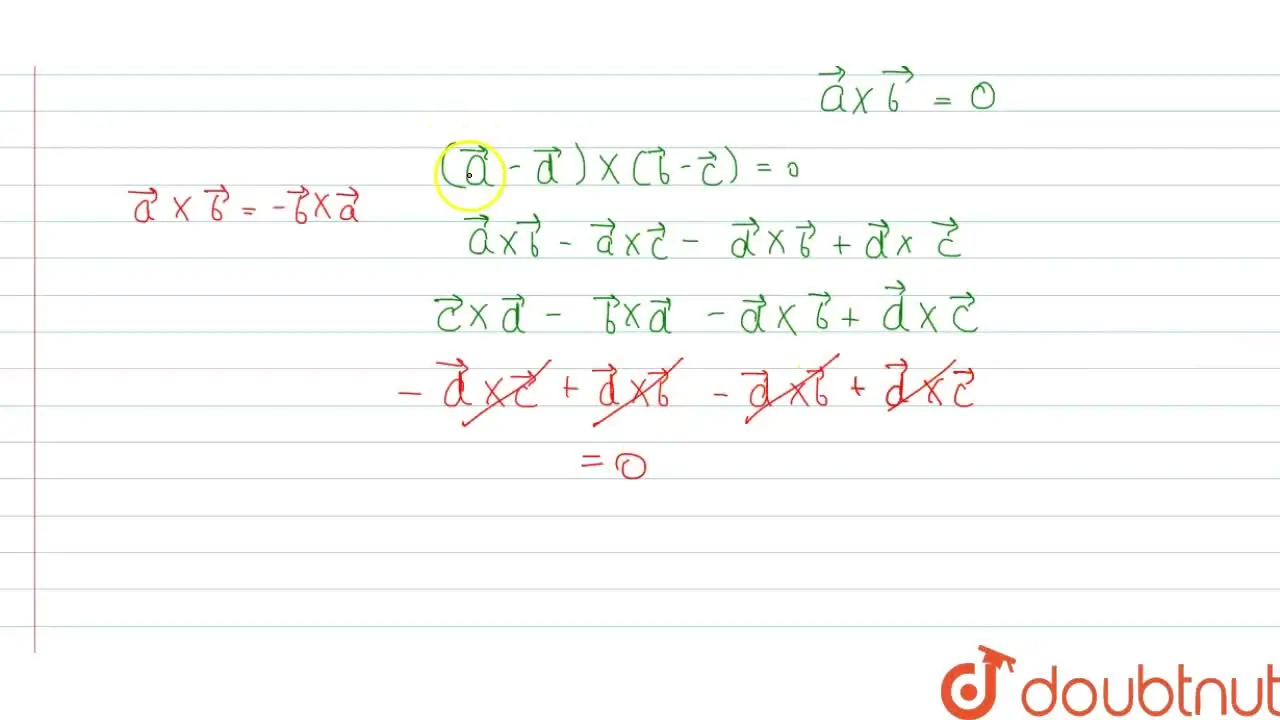If are vectors such that . Then show that the vectors and are parallel.
Step by step video & image solution for If vec(a)vec(b)vec(c ) and vec(d) are vectors such that vec(a) xx vec(b) = vec(c ) xx vec(d) and vec(a) xx vec(c ) = vec(b)xxvec(d). Then show that the vectors vec(a) -vec(d) and vec(b) -vec(c ) are parallel. by Maths experts to help you in doubts & scoring excellent marks in Class 12 exams.
Similar Questions
Prove that →a.{(→b+→c)×(→a+2→b+3→c)}=[→a→b→c].
View SolutionProve that →a[(→b+→c)×(→a+3→b+4→c)]=[→a→b→c]
View SolutionIf →a,→b,→cand→d are distinct vectors such that →a×→c=→b×→dand→a×→b=→c×→d, prove that (→a−→d).(→b−→c)≠0,
View SolutionIf →a×→b=→c×→dand→a×→c=→b×→d, then show that →a−→d, is paralelto →b−→c
View SolutionIf →A+→B+→C=0 then →A×→B is
View SolutionIf →a,→b and →c are unit vectors such that→a+→b+→c=0, then the values of →a.→b+→b.→c+→c.→a is
View SolutionIf two vectors →aand→b are such that ∣∣→a.→b∣∣=∣∣→a×→b∣∣, then find the angle the vectors →aand→b
View SolutionShow that the vectors →a−→b,→b−→c,→c−→a are coplaner.
View SolutionIf →a, →b, →c are three vectors such that →a.→b=→a. →c and →a × →b=→a × →c, →a ≠0 , then show that →b=→c .
View SolutionIf →a+→b+→c=0, prove that (→a×→b)=(→b×→c)=(→c×→a)
View Solution


